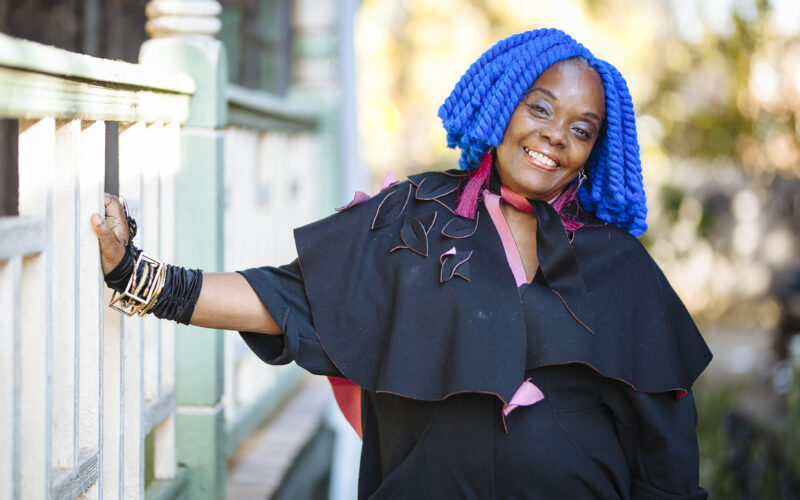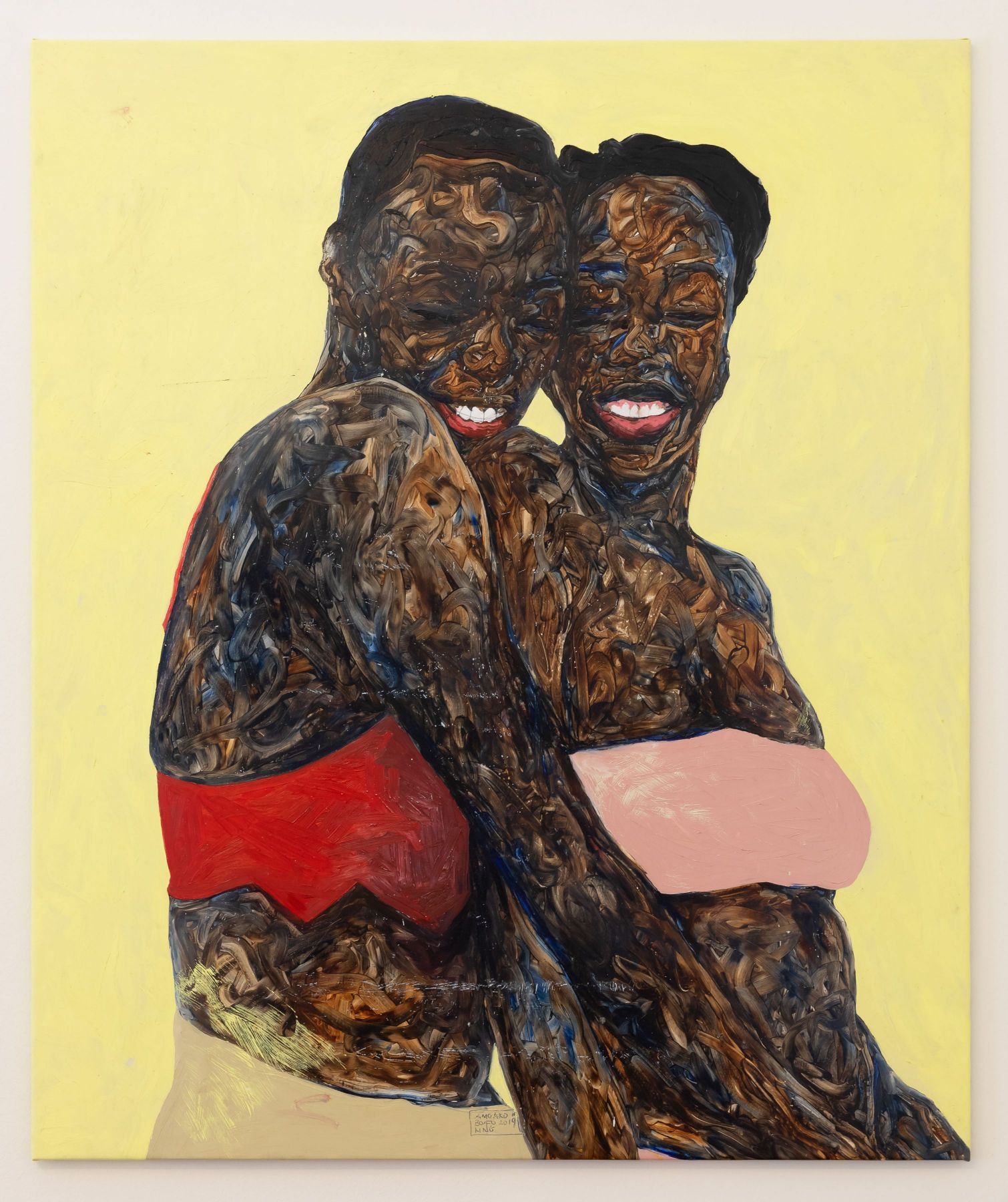Black women often are subjected to more dehumanizing frames than terms of reverence. To be too Black, too loud, too outspoken or to dress too colorfully are descriptions used to mock the resilience and autonomy of Black women. Understanding this history and wanting to make a change in the way young Black girls view themselves inspired Vashti DuBois to transform her home into a gathering space and immersive gallery for Black artists who orient their practice around work that reflects the revelation and uplift of Black womanhood and girlhood.
When DuBois purchased her home with her husband in Germantown, a historic community in Northwest Philadelphia, she could not imagine that it would grow into a museum. During her 20-year residency, she lived happily, raised two sons, and years later mourned the untimely death of her husband in 2012. In 2015, with support from curators Michael Clemmons and Ian Friday, Dubois officially converted her home into The Colored Girls Museum as a celebration of life and, as she noted during an interview with this writer, “someplace that I could put my grief that wasn’t painful and that could be lovely.”
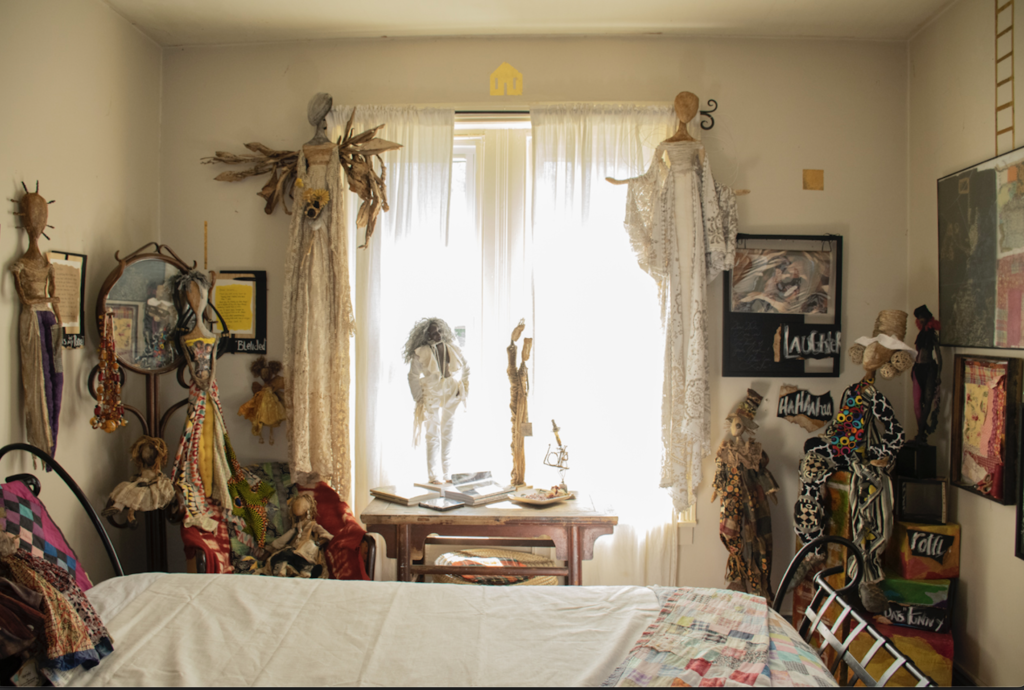
Touted as the only institution of its kind, The Colored Girls Museum is a truly special place—a prayer manifest as a movement to protect Black lives. The myth of the museum is as triumphant as its mission. What if Harriet Tubman were reincarnated as a home, her body expressed as an expansive house with many rooms that transform to reverberate the vision of all collaborating artists working within its walls? The museum is lovingly referenced with she/her pronouns and is treated as a living entity, autonomous and beloved. Under DuBois’s stewardship, she breathes life into the liberating and affirming creative practices of those whose work aligns with respite and community healing.
Vashti Dubois: Girlhood is a sacred place. And whatever happens to you in this life, you have a reference for that emotionally, from your girl self. If that little girl is not cared for, she will wreak havoc on you. The beautiful thing about growing up is that the girl is still there, but you’re not the girl anymore. So, you can go back and give her what she did not get. You can care for her, listen to her, tell her she can take a nap when you know she’s tired, or you can give her a hug when you know she needs a hug. You can tell her she doesn’t have to fight your battles ’cause “You got this, like you could take care of your girl.” And when you take care of that girl, then that girl can be powerful and lovely in the world, but she can also be at peace.
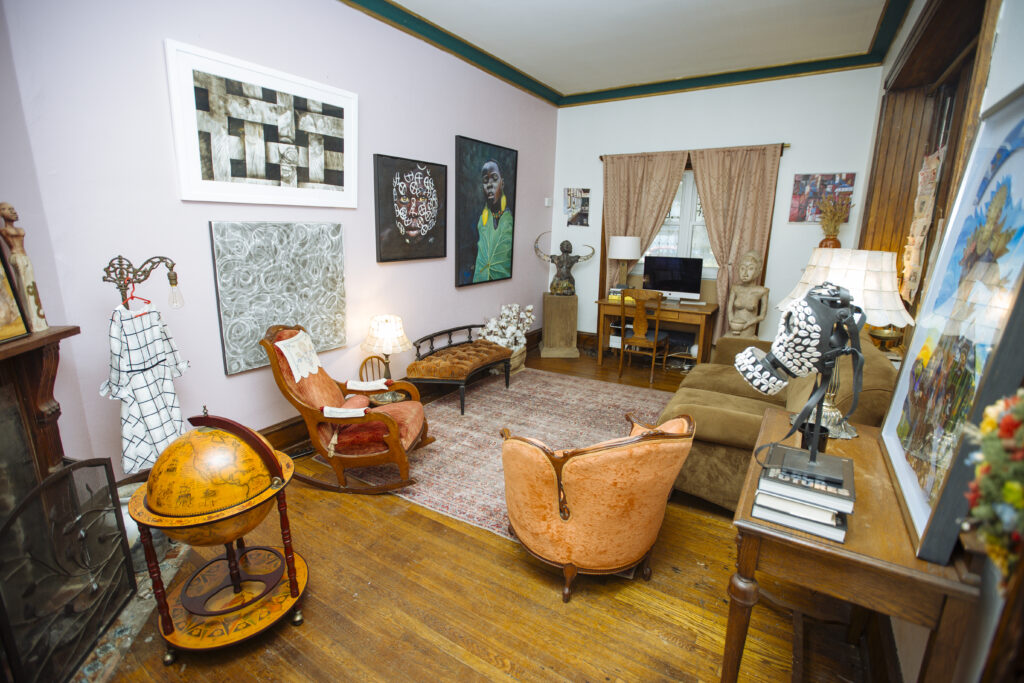
DuBois’ career as a counselor working primarily with Black and Latino young women plays a significant role in the museum’s mission. During those years, DuBois was invested in the reconfiguration, innovation and restoration of the extended day program where she served as a counselor. Hers was a practice that encouraged self-exploration, collaboration and healthy communication through art.
VD: I just remember how being a writer, being a theater person, really saved my life … so, I understood early on that if healing were to happen, there would have to be another system. We transformed the center. We were supposed to send our girls out to have jobs in the community, but I had girls in my center who were there for serious assault or who were fire starters. I had everything, so, sending them out into the community on these jobs just didn’t seem like a really good idea to me.
I hired them at the center, then I hired artists, and I had a staff of about 32 people. I basically put all of those professionals on the back end for the summer and put the artists in front, and we did something called the Extreme Center Makeover. Our girls had six weeks to completely transform all the spaces in this warehouse that we had been given that didn’t even have furniture when I came in. And my thought about that, quite honestly was, before you can reach someone, you have to change the conditions. We have to feel worthy, but how could doing that for ourselves work? Nobody’s doing it for you … You can see how these things stayed. This is a project that’s deeply rooted in love.
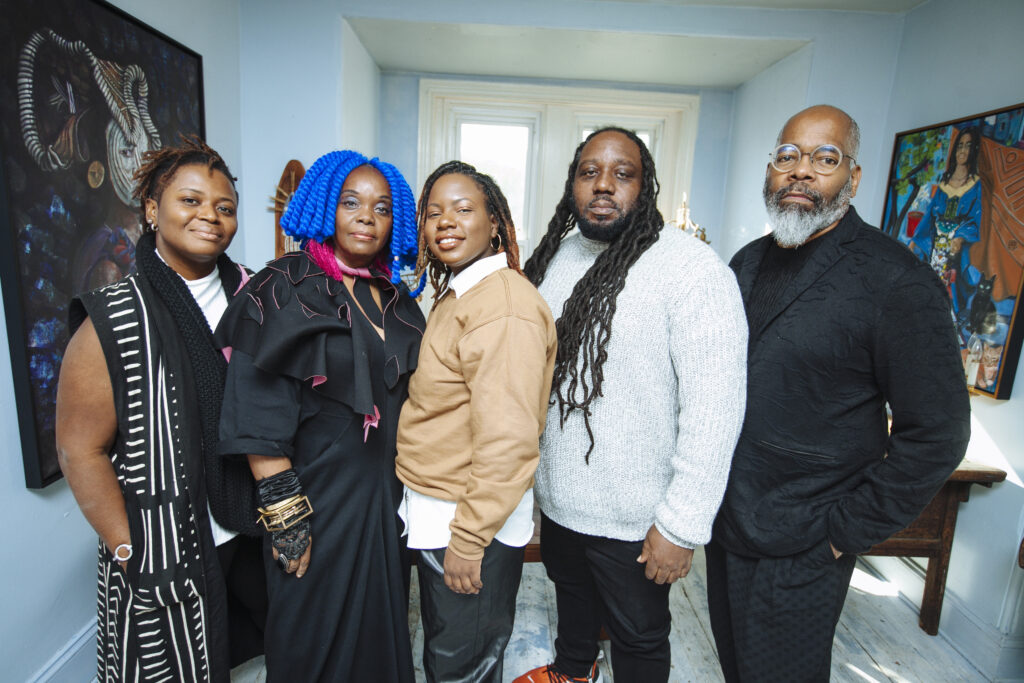
The success of that work to center creativity as a pathway for communion, empathy building and collective healing continues through CGM. What is perhaps most inspiring about the museum is its attention to the archival of Black girlhood.
VD: We understood the archive not just as a place but as an experience. So, we wanted little Black girls to feel comfortable going in and out of any of these archives, whether it’s on University of Pennsylvania’s campus, the library, or at Princeton in Toni Morrison’s archive. We also wanted them to understand the big and the small of it, that your mother is an archive, your grandmother is an archive, your great-grandmother is an archive. Your neighborhood is an archive. And so often, you think that you’re the only one that felt something or had an experience, but what the archive shows you is that we’re always building on something else.
The Colored Girls Museum not only serves as a gallery but, most importantly, as a space for community to gather and ground. This respite is activated by projects with the community, including gardening as well as art installations. The community members who participate in work at the museum are called The Keepers. The Keepers are charged to archive Black histories and document a continual triumphant march towards liberation and self-affirmation.
VD: The Keepers is an intergenerational project. Some are artists, some are just folks that we get through a nomination process, and our YouTube series interviews those folks in their home space to talk about what it means to be a keeper. We know that Black women are keepers of the culture, keepers of our homes, and our neighborhoods. We’re also launching our first podcast series this March called The Girlfriend Kit: Ask A Colored Girl. The Girlfriend Kit: Ask A Colored Girl comes from an old idea that we can connect each other with people, girlfriends, and we can expand our community.
Whether we are conscious of it or not, Black women are constantly doing these things. The goal is to have us think about “what does it mean to be a girlfriend?” and “what does it take to be a good girlfriend?” Especially for Black women, where we have so much internalized self-hatred and how that comes up. I hear so many sisters say, “Well, I don’t really trust women.” But you can’t make it in this world, in my view, if you don’t. So how do we do that? How do we provide a resource?
The Colored Girls Museum was recently awarded a two-year grant from the Forman Arts Initiative and the Philadelphia Foundation to support its general operations. The resources will help the museum to recover from its inability to conduct regular programs during the COVID-19 pandemic and expand its capacity to offer greater opportunities to artists in Philadelphia who want to work in the space. The museum reopened this spring with its 10th exhibition, Sit A Spell: An Invitation and Invocation.
VD: We have been very intentional about creating spaces for people to sit a spell. So often, when we’re in a state of crisis, our instinct is to do more, especially if you are an ordinary colored girl. We do not know how to sit ourselves down. We’re afraid to. Sit a Spell: An Invitation is an invocation that is really important because I wanted people to have the experience of coming into The Colored Girls Museum and feeling compelled to sit a spell, by invitation. The house is inviting you to slow down.
I understand that the problem facing ordinary women and girls of the African diaspora is not gonna be solved at the level the problem was made. Invocation is what runs in our blood. Because people don’t prepare spaces for us in this world, I want us to have that. It’s so important. I know how important it has been to me, you know, when you go to a girlfriend’s house, and they know you’re coming, and they have your favorite snacks, and they’ve like, made a little space for you. It’s like it … There’s just nothing like that feeling.
Sit A Spell: An Invitation and Invocation borrows some works from another traveling exhibit, First Time Ever I Saw Your Face, and is currently showcased in a smaller installation at Terminal C in the Philadelphia International Airport. At the Colored Girl Museum, Sit A Spell: An Invitation and Invocation spans the entire museum and features the paintings, quilts and fiber art of eight emerging artists, including Daphne Arthur, Enrique Zaidivar, Chad Kortez Everett, Aliyah Bonnette, Ellen Blalock, Patricia Smith, Odiyifo Evans, and Deborah Grayson.
In this exhibition, every room of the Victorian home is transformed into an extraordinary immersive undertaking. The walls are painted in bright colors to enunciate the potency of the installed artwork. Healing soundscapes wash through the space. Sweet resins are burned with an intention of ease. The resultant experience encourages viewers to bask in the vibe of each room as distinct encounters, while also taking in the broader themes of the entire museum.

VD: The Colored Girls Museum has spawned a lot of projects, some of which are named and many are not. But I think that what we did is proof of a concept. So many people have looked at what we’ve done and been inspired to do their own thing. I want to see more of that happening in the world. These portraits are intended to travel, and so, some are at the airport now, and I am ready for them to take off and meet other colored girls in other cities and countries and states and activate those spaces. It’s like your Colored Girls Museum starter kit, so I’m really excited about that.
Sit A Spell: An Invitation and Invocation is on view at The Colored Girls Museum March-September 2023. Email Thecoloredgirlsmuseum@gmail.com for details.







